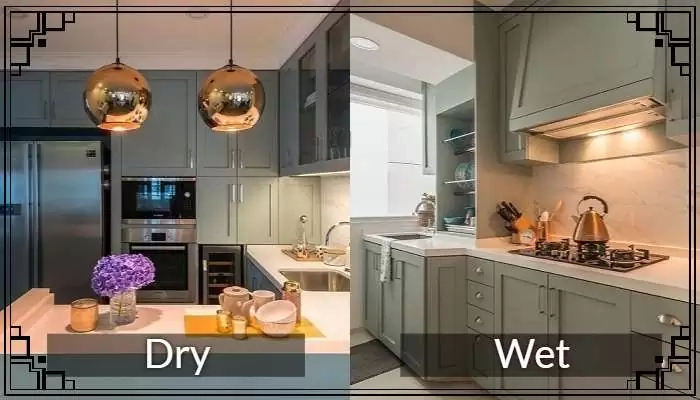

The concept of wet and dry kitchens has become increasingly popular in modern homes, particularly in Asian households. This design separates cooking and preparation areas into distinct zones, offering enhanced functionality, cleanliness, and style. Understanding the difference between wet and dry kitchens can help you create a practical and organized cooking space tailored to your needs.
A wet kitchen is a designated space for heavy-duty cooking that involves water, heat, and grease. This area is often tucked away to keep the rest of the house clean and odor-free.
Features of a Wet Kitchen:
A dry kitchen is a clean, accessible space used for light food preparation and non-messy tasks. It often doubles as a social area, especially in open-plan layouts.
Features of a Dry Kitchen:
By separating heavy cooking tasks from lighter food preparation, wet and dry kitchens reduce cross-contamination and maintain cleanliness.
Wet kitchens contain cooking odors and grease, preventing them from spreading to the living and dining areas.
Dry kitchens are designed to look polished and uncluttered, making them a perfect space for entertaining guests.
Splitting tasks between wet and dry zones reduces wear and tear in the dry kitchen, keeping it looking new for longer.
Pro Tip: Ensure easy access between the wet and dry kitchens for seamless workflow.
Having two kitchen zones requires more square footage, which may not be feasible in smaller homes or apartments.
Separate wet and dry kitchens involve higher costs for materials, appliances, and installation.
Wet kitchens, due to their exposure to water and grease, require more frequent cleaning to prevent stains and odors.
While not essential, even a small partition or designated wet zone can help maintain cleanliness in compact spaces.
Yes, combining the two kitchens in one space with clear zoning can be a practical solution for smaller homes.
Ceramic or porcelain tiles are durable, water-resistant, and easy to clean, making them ideal for wet kitchens.
Yes, but the dry kitchen enhances convenience by offering a clean, guest-friendly area for light preparation.
While more prevalent in Asian countries, the concept is gaining popularity in Western homes with open-plan layouts.
Wet and dry kitchens offer a functional and stylish solution for modern homes. By separating heavy-duty cooking tasks from light food preparation, this design enhances cleanliness, improves workflow, and elevates the overall kitchen aesthetic. Whether you’re building a new home or renovating your current kitchen, incorporating a wet and dry kitchen can add both practicality and value to your space.
Need help planning your wet and dry kitchen? Contact our experts for personalized design solutions and top-quality materials!


Join our professionals program for exclusive discounts on all purchases. Become a Pro Member